Despite the economic downturn, the cost of living in D.C. has rapidly increased over the past decade, according to a new report by think tank DC Fiscal Policy Institute.
Getting by on $750 for housing — which includes rent and utilities – has become increasingly difficult. The number of such apartments has decreased by more than half during the past decade, going from 70,600 in 2000, to 34,500 in 2010, according to the report.
Renters are more vulnerable to the forces of gentrification than homeowners, since renters don’t have equity to leverage as housing costs rise. But buying a house in D.C. has also become much more expensive over the past decade. The median home price in D.C. more than doubled since 2000, reaching $400,000 in 2010, according to the report.
More than half of the city’s population rents, and the D.C.-area is the tenth most expensive metro region in the nation for renters. People of color are more likely to rent than whites in D.C.; about the same number of whites own homes than rent them. Meanwhile, about double the number of blacks, Latinos and Asians rent their homes than own them.
Increasing housing costs and stagnant incomes mean that a growing share of DC households face severe housing cost burdens. Since 2000, the number of households paying more than half of their income on housing has risen by 15,000, and this occurred almost exclusively among renter households. Very low-income households are the most likely to face these severe housing burdens, with just under two-thirds paying more than half of their income on rent in 2010. Paying more than half of one’s income on housing is considered a severe housing burden by the U.S. Department of Housing and Urban Development and can leave low-income families with little left to take care of other necessities like food, clothing, medicine and transportation.
Read more at: www.dcfpi.org
Can babies exhibit racist behavior? Maybe, according to a new study that sheds light on the effects of exposing babies to just one racial group.
The study from University of Massachusetts at Amherst found that, by nine months, babies had trouble distinguishing people of other races if they had only been around people of their own race. Researchers ran tests with white babies who had little or no exposure to African Americans. At nine months, those babies could read the emotions of whites and tell white people apart. They had more difficulty doing that with black people.
GOOD’s Amanda Hess writes about the study’s findings.

These early developmental deficiencies could contribute to some of the most pervasive racist stereotypes among adults—the idea that people of other races “all look alike,” or the assumption that people of other races are emotionally deficient in some way—dumb or angry or perpetually happy. And these racial biases begin to kick in long before adults can verbally communicate concepts about race to their children. In fact, the researchers compare this developmental phenomenon to that of learning a language—at first, babies’ ears are open to sounds made by all languages, but their brains quickly begin to attune to the language they hear most often.
Read more at: www.good.is
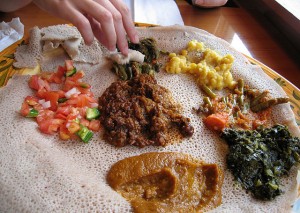
LollyKnit / Flickr
Restaurants around D.C.’s unofficial “Little Ethiopia” have been experimenting lately, hosting everything from rock bands and comedy nights, to serving macaroni and cheese instead of injera and tibs. It’s all been part of an effort to stay competitive and alive in the midst of a struggling economy.
So, is it working? Maybe so, at least for Queen Makeda. The restaurant switched over to American fare and has been holding hip hop nights and hosting bands. It’s been so successful that the restaurant now needs more space. This weekend will be Queen Makeda’s last night at 1917 9th St. NW. The restaurant is closing with plans to reopen in a bigger space in the neighborhood.
“There’s definitely a niche in D.C. for what we do,” said Queen Makeda bartender Jeremy Quarless-Cole. “You have to [change] in that area, simply because there are so many Habesha restaurants serving the same food.”
Perhaps there’s still a healthy market for Ethiopian food in D.C. Just not when it’s all concentrated within a few blocks.
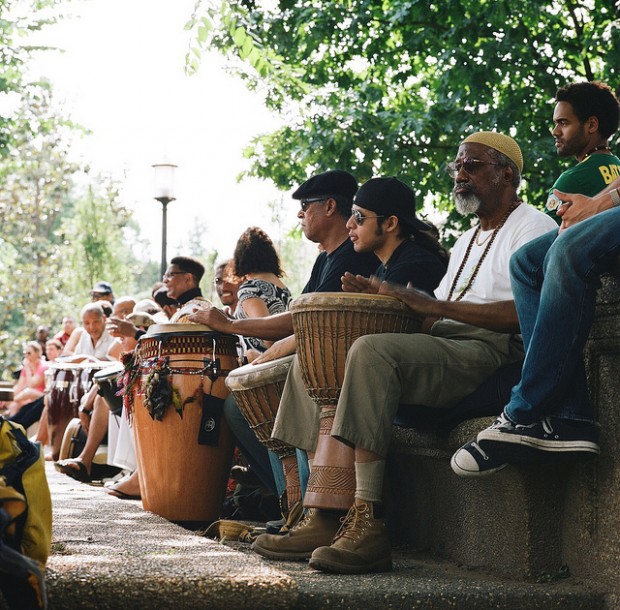
Brandon Nedwek / Flickr
A weekly drum circle has been decades-old a mainstay in the park called Meridian Hill by some, and Malcolm X by others.
D.C.’s big, popular park off of 16th Street NW has two names. Sort of. Some (including the National Park Service) call it Meridian Hill Park, while others (including many residents) call it Malcolm X Park.
There was a move to rename the park in the aftermath of the 1968 riots, but Congress rejected that proposal. Many still call it Malcolm X Park. Earlier this week, we asked our readers what they call the park, and why. Here are the results thus far from our poll, showing a split of opinion slightly in favor of Meridian Hill Park:
Continue reading →
Nationwide unemployment dropped slightly in April, but the job outlook differs among racial groups, according data released Friday by the U.S. Department of Labor Statistics. The overall, seasonally-adjusted unemployment rate dropped from 8.2 percent in March to 8.1 percent in April.
African Americans made the biggest gains, seeing unemployment decline from 14 to 13 percent. Yet joblessness remains the highest for that group. Latino unemployment went unchanged at 10.3 percent, and white unemployment rose from 7.3 to 7.4 percent.
Local unemployment rates will be released May 18. D.C.’s March unemployment rate was 9.8 percent, but joblessness varies by community. Ward 3′s March unemployment rate reached 2.5 percent, while it hovered just above 24 percent in Ward 8.
Nonfarm payroll employment rose by 115,000 in April, and the unemployment
rate was little changed at 8.1 percent, the U.S. Bureau of Labor Statistics
reported today. Employment increased in professional and business services,
retail trade, and health care, but declined in transportation and warehousing.
Read more at: www.bls.gov
Just as communities east of the Anacostia River are slowly experiencing change, so is the river itself. The Anacostia River has struggled with pollution — including high levels of fecal matter– for years. But activists have been working to raise the profile of the river and bolster efforts to clean it up.
The Washington Post chronicles the effort, and notes some of the reasons why the Anacostia River has gone neglected for so long. For one, the river doesn’t provide drinking water, “but the prevailing theory is that the communities surrounding the river — wards 6, 7 and 8 — have been forced to bear the brunt of the District’s waste.”
Those wards are predominately black and have high poverty rates.

“America has a shameful history of putting our pollution on poor minorities, and there’s no other way to say it,” said Mike Bolinder, head of the Anacostia Riverkeeper group. “You can slice and dice it any way you want, but the Potomac [River] got cleaned up first because it isn’t near poor minorities and toxic landfills.”
Read more at: www.washingtonpost.com
A community center opening next month will cater to D.C.’s Latino lesbian, gay, bisexual and transgender community. Casa Ruby is the project of local activist Ruby Corado, who tells Metro Weekly that the center will also welcome people who aren’t LGBT, and connect them with local non-profits and District services. The center is located at 2822 Georgia Ave. NW, according to the group’s Facebook page.

Corado says she hopes to reach segments of the population who don’t have access to resources or services, including transsexuals, sexual minorities, youth and people struggling with immigration-related issues. She expects the resource center to double as a community center where people can meet and spend time with friends.
”I live in D.C., I grew up in D.C. Many people have opened doors for me, and now I want to be able to open doors to everyone else,” Corado says. ”Even though some services are going to be targeted to some groups, I envision this as a multicultural center.”
Read more at: www.metroweekly.com
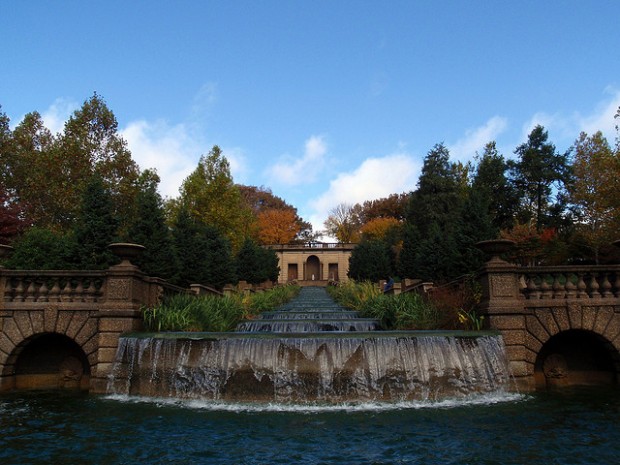
Daniel Lobo / Flickr
One park, two names.
An interesting debate arose on Twitter this afternoon after Washington City Paper managing editor Mike Madden declared that the newspaper would refer to the park at 2500 16th Street NW as Malcolm X Park, not Meridian Hill Park.
A few things to consider: the National Park Service owns the land and officially calls it Meridian Hill Park. From NPS:
The name Meridian Hill comes from a proposal in the early 1800s to establish an official meridian or longitudinal base point, for map-making and other purposes, through the mid-point of the White House. A plaque at the upper entrance to the park from 16th Street takes official note of an 1816 meridian marker which stood on the proposed meridian.
A city sign refers to the park using both names. A proposal came before Congress after the 1968 riots to officially rename the park as Malcolm X Park. It didn’t pass, but the name persisted.
We asked what our readers call the park and why. A number of you tweeted that the name you use, both Malcolm X and Meridian Hill, is how you were first introduced to the park. Native and longtime Washingtonians were also split. (Disclosure: I’ve been known to call it Malcolm X Park).
But why not a more systematic way to measure the pulse of D.C. on this issue? Alas, a poll. Vote below, and tell us your reasoning in the comments section. Do you think the name people use says something about their connection to D.C., or is it just about what’s most accurate?
Continue reading →
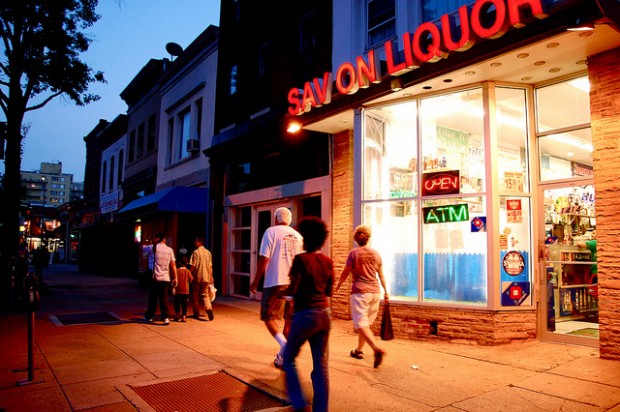
Lauren Parnell Marino / Flickr
A stretch of 14th Street NW.
The 14th Street NW corridor continues its transformation, as work on luxury condo buildings marches on and announcements of restaurant openings stream in. The older businesses that opened along the strip in the aftermath of the 1968 riots are, one-by-one, closing shop (and getting millions of dollars in exchange for their buildings, if they own them). Some newer businesses are moving, too.
Development comes in waves, from pawn shops to fancier locally-owned businesses, and eventually, to chain retailers. That’s according to a few real estate experts interviewed by The New York Times, who say that 14th Street NW could eventually see its small, albiet upscale businesses, replaced by national chains and junior-sized box stores.
People move into gentrifying neighborhoods partially because they see how it could change, but also because of the unique character of such places. If national chains come, will a neighborhood lose its desirability among such newcomers? From the Times piece:
One [resident], Tim Christensen, who has lived in the neighborhood since 1989 and is president of the Logan Circle Community Association, wondered about the cost.
“I’ve said before that when the last pawnshop and the last storefront deli leaves 14th Street, I will leave,” he said. “It’s that mixture of the gritty and the upscale that gives the neighborhood a unique character. If one day it’s all gone, I think we will feel a sense of loss.”
Gentrification does indeed come in waves. Some of the first businesses that contribute to the revitalization of a neighborhood can get priced out when turnover is complete. This is especially true for business owners who lease space and have no building to sell; they can become victims of the success they helped to create.
Food deserts are low-income places with few large grocery stores and supermarkets, and they’ve been the focus of activists and the federal government in the fight to correct food disparities. But simply building more supermarkets doesn’t mean people will eat better.
NPR reports on the lessons learned by activists in some low-income Philadelphia neighborhoods, as they’ve started helping hundreds of small corner stores stock their shelves with fresh and healthy foods. Displays include recipe and nutrition information.
A similar, but smaller, effort is underway in the District through D.C. Central Kitchen, and it’s partially funded by the city. Twenty-nine stores in Wards 4, 5, 7 and 8 participate in the program.
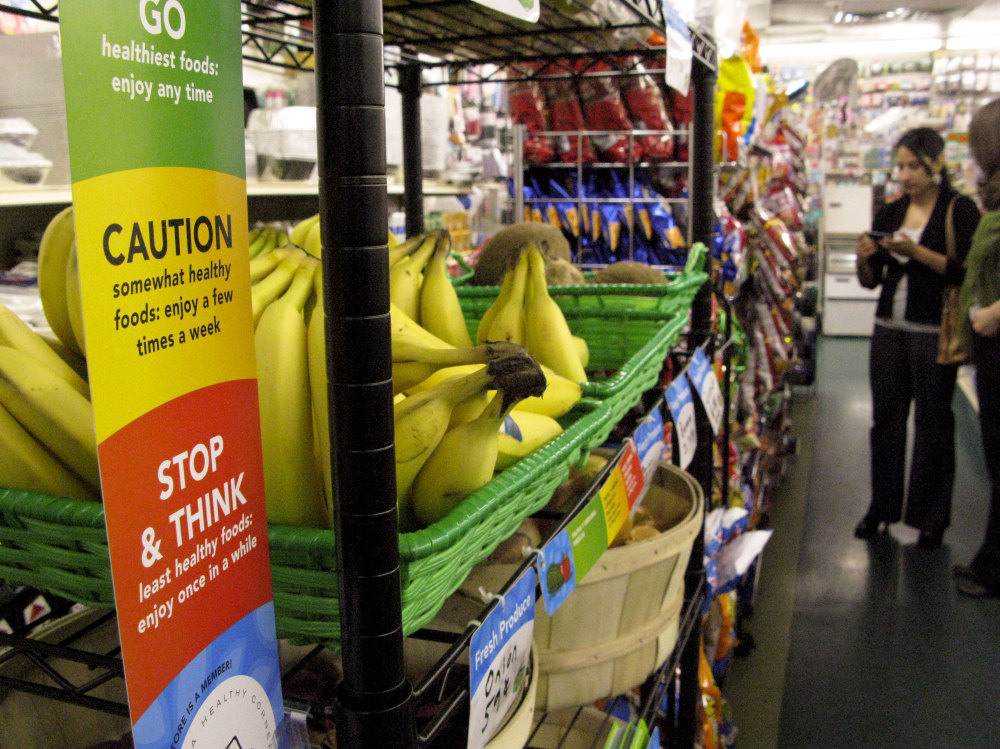
Barry Popkin, from the University of North Carolina, says this is the sort of effort that really can work. But changing food habits won’t happen quickly, he says. Powerful economic incentives got us into this situation over the course of the past half-century.
“In 1950, low-income Americans ate the most healthy diets in our country,” he says. “In 2010, they ate the least healthy diets. And that’s because the least healthy foods are the cheapest.”
Read more at: www.npr.org










